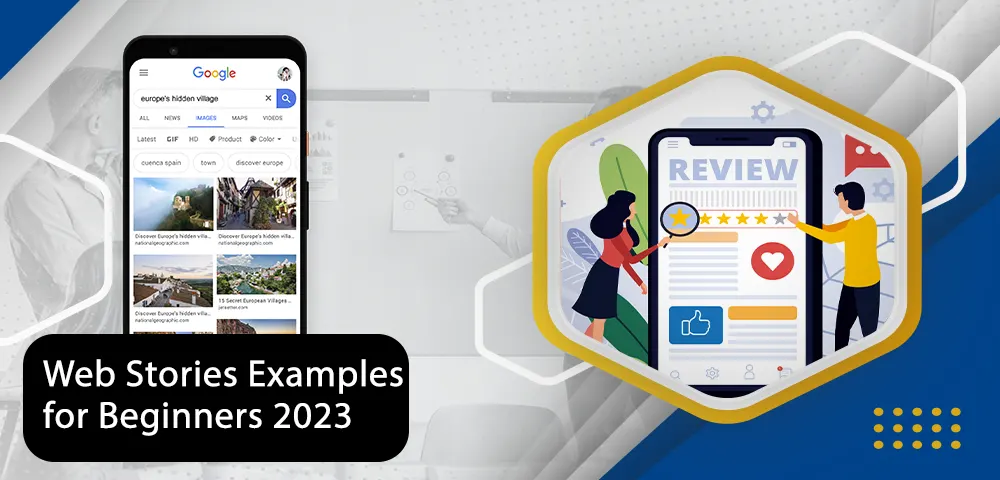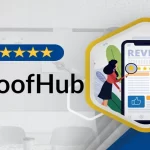Web Stories are a new form of digital storytelling that allows publishers to create visually rich, snackable content for the web. Developed by Google, Web Stories are designed to be easily consumable on mobile devices and are optimized for the mobile web. They are essentially a series of full-screen, scrollable, and swipeable pages that are linked together to form a cohesive narrative.
In this article, we will explore what Google Web Stories are, the benefits of publishing them, with some examples of Web Stories by industry. We will also delve into what makes these Web Stories examples stand out and how you can create your own Web Stories.
What Are Google Web Stories
Google Web Stories are a new way to create and share short-form, visually rich content on the web. They are similar to traditional digital stories in that they allow publishers to craft a narrative using a series of interconnected pages. However, unlike traditional stories, Web Stories are designed to be easily consumable on mobile devices and are optimized for the mobile web.
Web Stories are created using Google’s Web Stories plugin for WordPress, which allows users to easily add text, images, and other multimedia elements to create visually appealing content. They can also be created using Google’s Web Stories Creator, a standalone tool that allows users to create Web Stories without the need for a WordPress site.
Once created, Web Stories can be shared on the web using a unique URL and are also eligible to be shown in Google Search results and Google Discover. This makes them a great way for publishers to reach a wider audience and drive traffic to their site.
Benefits Of Publishing Google Web Stories
There are several benefits to publishing Google Web Stories:
- Web Stories are optimized for the mobile web. With more and more people accessing the web on their phones, it’s important to create content that is easily consumable on mobile devices. Web Stories are designed specifically with this in mind, making them a great option for mobile-first content.
- Web Stories are easy to create. With the Web Stories plugin for WordPress and the Web Stories Creator tool, it’s easy for anyone to create visually rich, interactive content for the web.
- Web Stories can drive traffic to your site. By being eligible to be shown in Google Search and Google Discover, Web Stories can help you reach a wider audience and drive traffic to your site.
- Web Stories can improve user engagement. The interactive, visually rich nature of Web Stories makes them a great way to engage users and keep them coming back for more.
Web Stories Examples By Industry
Web Stories can be created for any industry or topic, but here are a few examples of how different industries are using Web Stories to engage their audience:
Food And Cooking

One industry that is taking full advantage of Web Stories is the food and cooking space. Food bloggers and recipe developers are using Web Stories to share visually appealing recipes and cooking tips with their audience.
One example of this is the “5-Ingredient Dinner Ideas” Web Story by Tasty. This Web Story features visually appealing images of five different dinner recipes that can be made with just five ingredients. Each recipe is accompanied by a short description and a link to the full recipe on Tasty’s website.
What makes this Web Story stand out is the visually rich content and the use of interactivity to keep the reader engaged. The use of images and the ability to swipe through the different recipes makes it easy for readers to quickly browse through the content and find something that interests them.
Travel

Another industry that is using Web Stories effectively is travel. Travel companies and travel bloggers are using Web Stories to showcase visually appealing destinations and share travel tips and experiences with their audience.
One example of this is the “48 Hours in Tokyo” Web Story by Travel + Leisure. This Web Story takes the reader on a virtual tour of Tokyo, showcasing the city’s top attractions and providing tips on where to eat, stay, and shop.
What makes this Web Story stand out is the use of beautiful images and video to bring the destination to life. The use of maps and the ability to swipe through the different locations also adds an interactive element to the story.
Fashion And Beauty

The fashion and beauty industry is also using Web Stories to showcase their products and share tips and trends with their audience.
One example of this is the “Fall Beauty Trend” Web Story by Sephora. This Web Story features a series of pages showcasing the top beauty trends for the fall season, complete with product recommendations and tips on how to achieve the looks.
What makes this Web Story stand out is the use of visually appealing images and the integration of product recommendations. The use of interactive elements such as swiping and tapping also adds an engaging element to the story.
Health And Fitness

The health and fitness industry is using Web Stories to share workout routines, healthy recipes, and wellness tips with their audience.
One example of this is the “30-Day Abs Challenge” Web Story by Shape. This Web Story features a series of pages showcasing a different ab workout for each day of the month, complete with instructional videos and descriptions of each exercise.
What makes this Web Story stand out is the use of instructional videos and the clear layout of the workouts. The use of a countdown to the end of the challenge also adds a sense of progression and motivation for readers.
What Makes These Web Stories Stand Out
There are a few key elements that make these Web Stories examples stand out:
- Visually appealing content: All of these Web Stories use visually rich content such as images and videos to bring the story to life.
- Interactive elements: The use of swipe and tap interactions in these Web Stories adds an engaging element and keeps readers interested.
- Clear layout and organization: These Web Stories are well organized and easy to follow, with clear headings and a logical flow to the story.
- Relevant and informative content: Each of these Web Stories provides valuable information or tips to the reader, making them worth reading.
How To Create Your Own Web Stories
If you’re interested in creating your own Web Stories, there are a few steps you can follow:
- Choose your topic: Think about what you want to share with your audience and what would be most relevant and interesting to them.
- Gather your content: Collect all the necessary images, videos, and text that you will need to create your Web Story.
- Use the Web Stories plugin for WordPress or the Web Stories Creator tool: These tools make it easy to create visually appealing and interactive Web Stories.
- Organize your content: Arrange your content in a logical order and use clear headings to guide the reader through the story.
- Add interactive elements: Use swipe and tap interactions to keep the reader engaged and make the story more interactive.
- Publish and share your Web Story: Once you’ve created your Web Story, publish it on your website and share it with your audience using a unique URL.
Conclusion
In conclusion, Google Web Stories are a new and exciting way to create and share short-form, visually rich content on the web. They are easy to create and can drive traffic to your site, making them a great option




